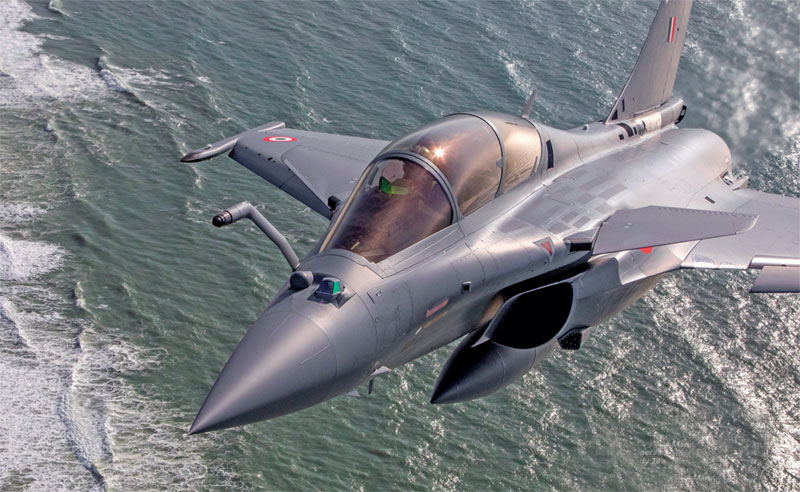Flight of Ambition
Ghazala Wahab
Quoting defence minister Rajnath Singh address’ to the Naval Commanders’ Conference earlier this year—‘India was once a landlocked country with seashores, but now it can be seen as an island country with land borders’--, the chief of naval staff Admiral Dinesh K. Triparthi concluded his opening remarks during his annual Navy Day press conference, with the assertion that “India was, is and will always remain a maritime nation.”

The navy is going to sign the contract for 26 Rafale Marine to operate from the Indian aircraft carrier in early 2025 (Pic courtesy: Dassault Aviation)
And just as Singh had done, Triparthi also relied upon the future to underline the importance of Indian Navy’s present. According to him, as India’s economy will grow to USD 30 trillion by 2047, the navy will be required to secure its sea lanes of communication (SLOCs) through which the trade propelling its economy would ply. To illustrate how these SLOCs will be secured, the CNS shared some statistics with the media.
He said that 63 ships, including one submarine were currently under construction in various shipyards in India, and two frigates were being built in Russia. In addition to these, Defence Acquisition Council (DAC) has accorded the acceptance of necessity (AoN) for 31 additional ships, including seven frigates under Project 17B and six additional submarines under Project 75 India. AoN has also been accorded for 60 utility helicopters maritime (UHM) to replace the Chetak helicopters and 119 unmanned systems to be acquired under the Make II category of Defence Acquisition Procedure 2020. However, the big news of the day was that even as the second SSBN INS Arighat, which was commissioned in August 2024 is on operational deployment, the government has approved design and construction of two SSNs (nuclear-powered submarines), which are likely to be inducted in a decade’s time.
Assuring the nation that the navy was fully prepared to secure India’s vital interests by inducting one ship every month for the next 12 months, the CNS said that the force is not only cognisant of galloping technology and changing character of warfare but is proactively seeking niche technologies to “plug the gaps and look at long term technology advancement.”
“We now go out to the industry with our requirements,” he said. According to him, the navy has constituted two special task forces under officers of Rear Admiral ranks to engage clo
Subscribe To Force
Fuel Fearless Journalism with Your Yearly Subscription
SUBSCRIBE NOW
We don’t tell you how to do your job…
But we put the environment in which you do your job in perspective, so that when you step out you do so with the complete picture.







